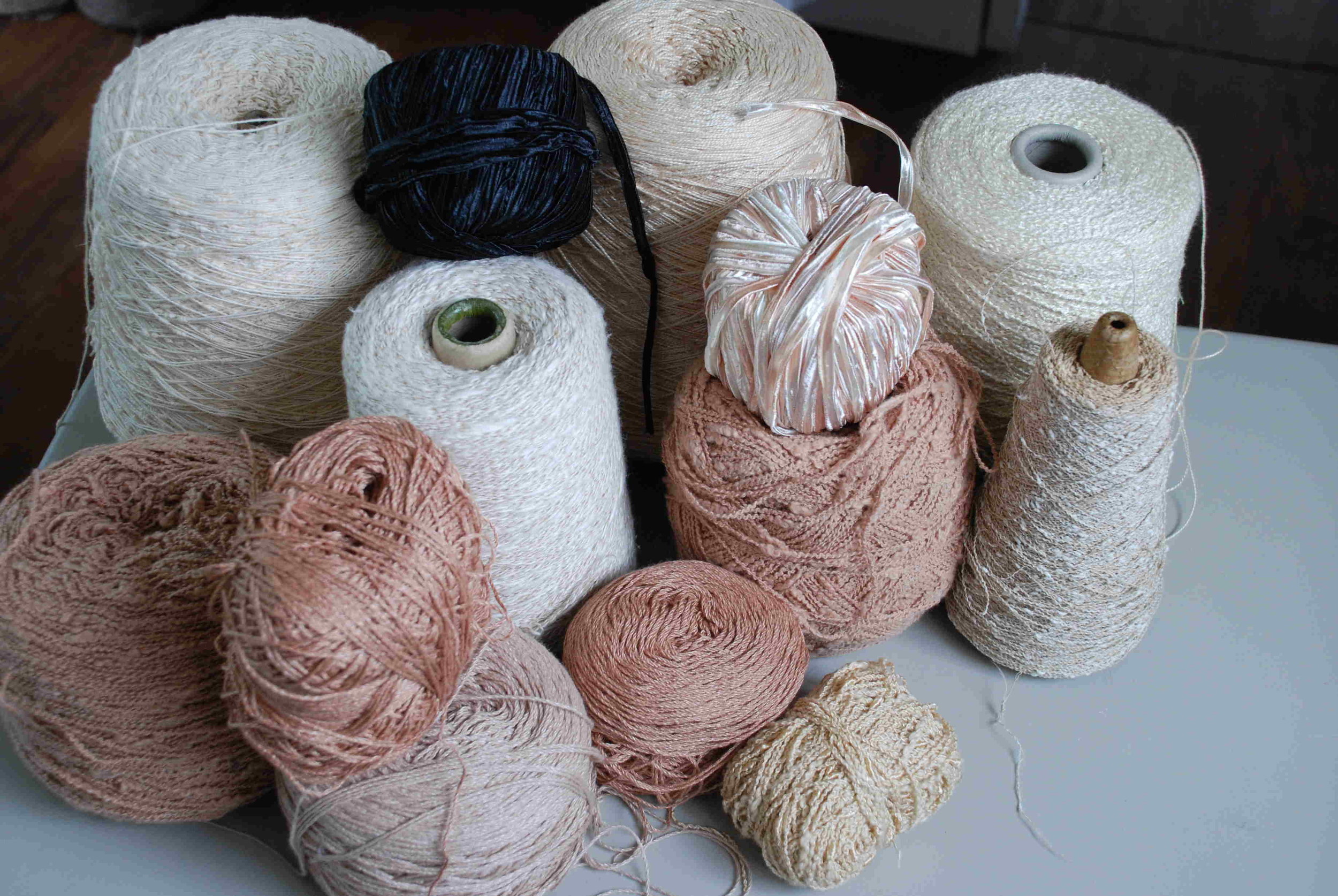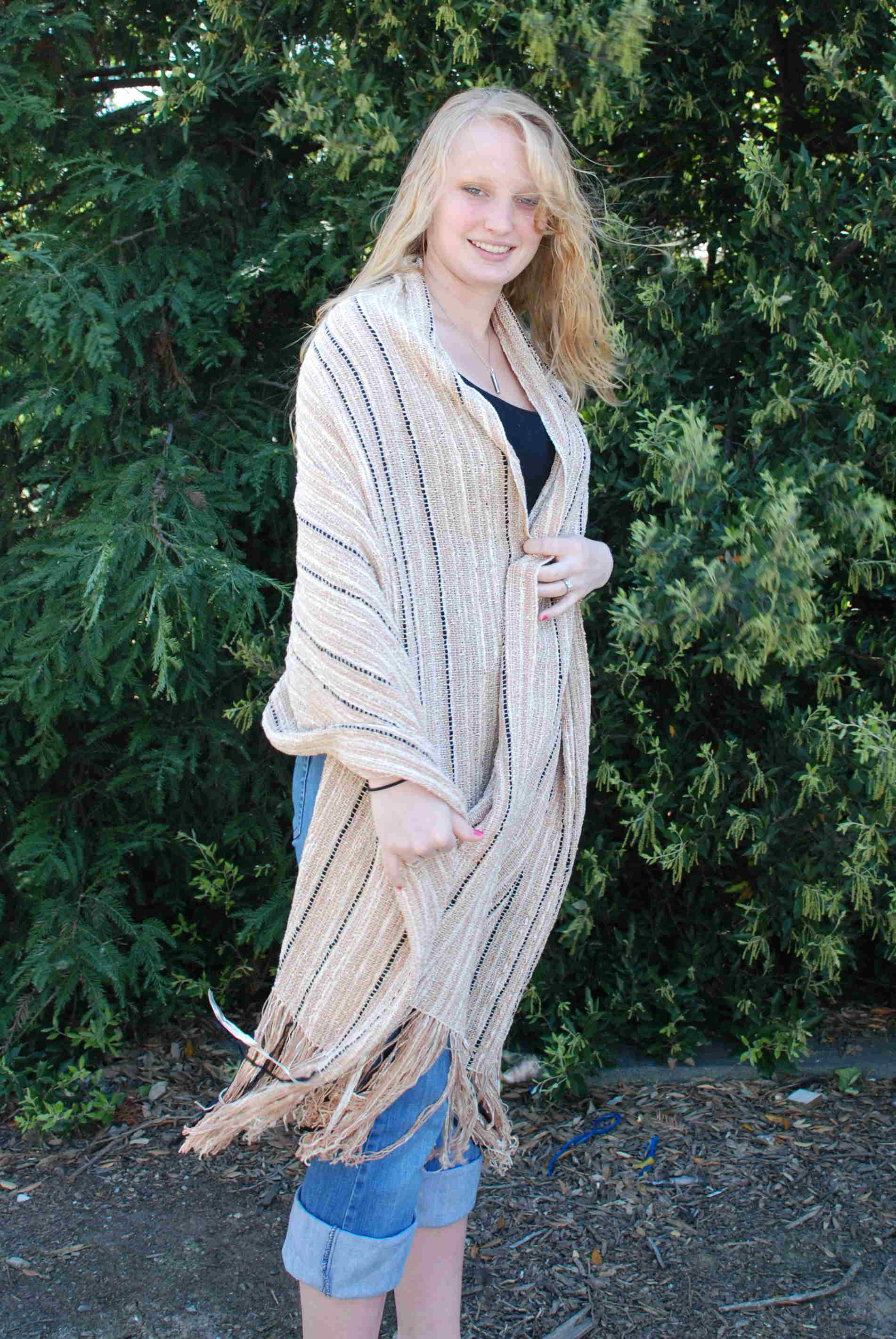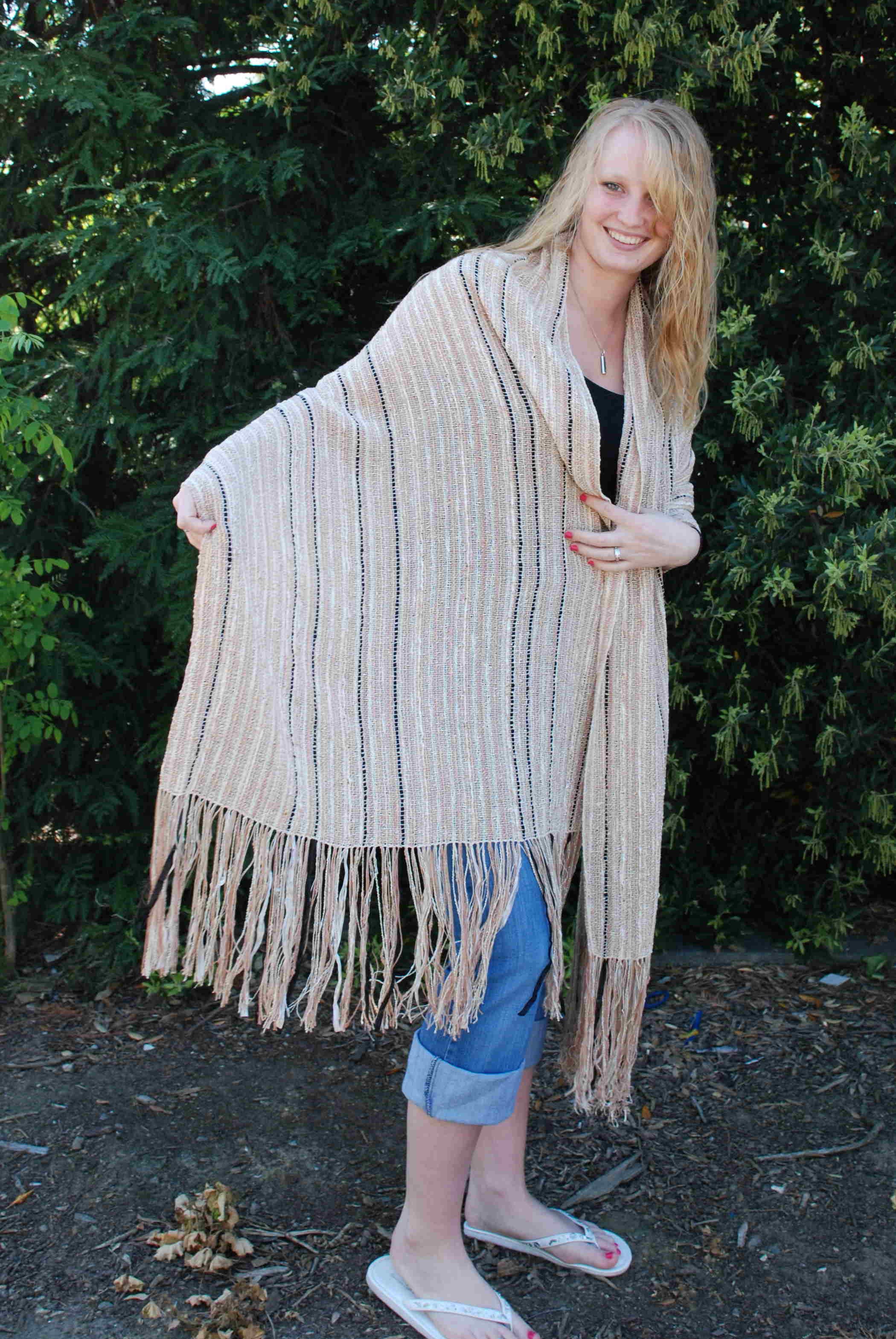Wedding Shawl Commission
/Last month I posted the following photo that shows the array of yarns that were chosen by a friend for her daughter's wedding shawl.

My friend originally planned to weave the shawl herself but then commissioned me to weave it.
This is the warp on the loom. I was concerned that the white weft was going make the shawl too white. No need to worry. It came out just right.
In this close-up you can see the variety of yarns used in the warp. The weft is relatively fine with a regular slub that helps keep the yarns in place even though the shawl is loosely woven.
My favorite model just happened to be here before my friend was to pick up the shawl. (That's my daughter visiting from VT.)
I got the report back from my friend: "My daughter loves her wedding shawl!! She says it's the most beautiful shawl she has ever seen!! That's a compliment from my very fussy and stylish daughter!"













